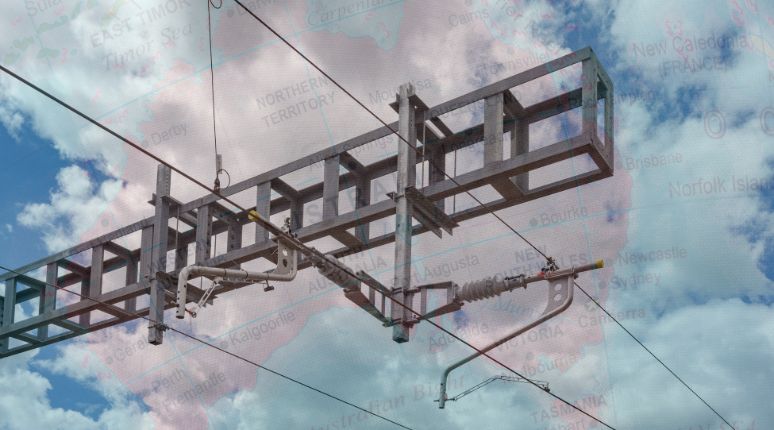
What Is Catenary Wire – Everything You Should Know
The purpose of implementing this system when constructing new train stations and lines or adding new trains or trams to an existing line is to provide power. All systems are controlled from a feeder station and are powered by and managed remotely. The system allows for easy, offsite regulation without needing to physically power a vehicle from the localised source within the machine itself.
Unlike uninsulated wires attached to crosswires by clamps, a catenary system uses two wires – a catenary wire and a contact wire. The catenary wire is hung between line structures at specific tension and a contact wire is attached to it at a frequent interval by droppers. This second wire is straight, parallel to the railway track and integral to the catenary system’s structure.
Catenary wire material is made up of tiny threads which feed electricity through to a vehicle from the pantograph which presses against the underside of the lowest overhead wire- contact wire.

Electrical current is then allowed to flow through to the train and back to the feeder station through the steel wheels on the running rails. As high voltages of electricity is transmitted throughout the running of the train or tram, a catenary system uses many large insulators to keep it physically and electrically isolated to just within the system.
Catenary wire fixings come in many different types and in various forms. The fixings affix to the wire to connect the entire system and secure it while also allowing electrical current to run through with ease.
For more information on the types of fixings best suited to the wire you need, give us a call today to discuss your options.
Installing a catenary system is an intricate process that should be handled only by a professional electrician.
Not only can catenary wire installation be dangerous with many associated risks, it’s also a very involved task that shouldn’t be taken by someone who doesn’t have a current electrical license and is not well-equipped.
Catenary prices can vary depending on the type of wire used as well as the required amount of length needed. Give us a call to discuss your project and budget and we will be able to give you a tailored quote.
Here at Keble’s Trading, our staff possess a vast amount of knowledge on catenary wire and catenary systems. If you’re a contractor or electrician looking to learn more about which types of wire is best suited to your project, or if you’re wanting to compare prices or particular types of stock, give us a call today and we’ll gladly discuss all of your options with you.
Catenary Wire – FAQs
What is the purpose of a catenary wire?
The purpose of catenary wire is to provide electrical power to trains, especially underground, where they are allowed and need to move a lot quicker through each tunnel.
How to install catenary wire?
Installing catenary wire should be performed by a professional who is highly experienced in electrical work. There are various considerations to take into account including electrical safety, correct mounting of fixings and wire positioning, overall installation technique, as well as various tools and equipment needed in order to complete this task effectively and safely. We recommend discussing the installation process with an electrician.
Does catenary wire carry current?
Yes, the catenary wire is an electrical conductor. Due to the high voltages emitted, and the need to ground the stainless-steel supporting poles, a catenary system uses many large insulators to keep the high voltage physically and electrically isolated to just within the system.
What is catenary wire made from?
Even though the word itself is derived from the Latin word meaning chain, catenary wire is actually made from very fine wire strands and is available in copper, aluminium, and/or stainless steel.
How does a catenary work?
Catenary comprises of two wires, a catenary wire and a contact wire, with the former being hung at a specific tension between line structures and attached to the latter using droppers.
A catenary system is used to supply electricity to a train which is equipped with a pantograph. The pantograph presses against the underside of the lowest overhead wire in the system called a contact wire. Current collectors are electrical conductors that allow electrical current to flow through to the train and back to the feeder station through the steel wheels on the running rails.
How much weight can a catenary wire hold?
A catenary system can typically carry a safe working load of 340 kg with 5:1 safety factor.
About Keble’s Trading
Related Article
PVC Wire vs Galvanized Steel wire rope – What is the Difference & Uses
Wire Rope Balustrade installation – Tips & Advice To Follow
Everything you need to know about Stainless Steel Wire Rope Balustrade
Understanding Different Wire Rope Uses Across Various Industries & Sectors
How to Choose the Perfect Wire Rope?
Galvanized Steel Vs Stainless Steel Wire Rope
& OPERATED
EXPERIENCE
PRICES
& SUPPORT
- Monday to Friday - 8:00AM - 4:30PM
- Saturday - Closed
- Sundays & AU/VIC Public Holidays - Closed






No Comments yet!